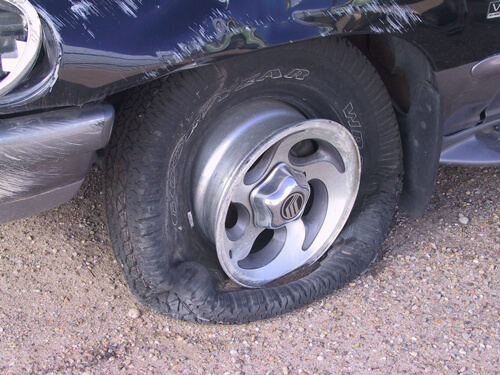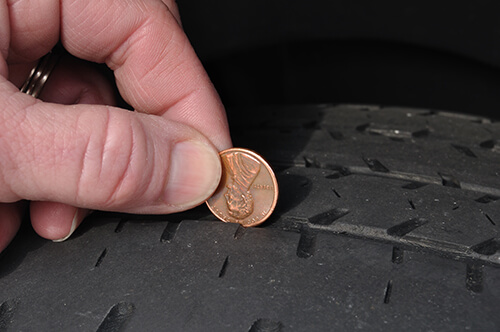Bad tires – or old tires sold by dealers and garages under the assumption of newness – place drivers’ lives at major risk of injury or death. They must be inspected regularly, if not prior to purchase. Even big-name sellers such as Pep Boys and Wal-Mart can conflate “unused” with “new,” leaving tires as old as six years and rendered defective because of age and storage conditions on the shelves. Consumers need to know how to check to determine the age of the tire before they purchase the tire and for the signs of a bad tire if they hope to keep themselves and their families safe.

What You Need to Know about Bad Tires
If you are in the market for a new set of tires, or suspect that you may be driving with old or defective tires, check for the following signs:
- Most important, check the age of the tires and do not purchase or ever use a “new or used” tires older than 6 years old
- Making suspicious sounds, such as humming
- Exposed belts, cords, tread edges or threads
- Alignment problems
- Vibrations
- Shallow treads
- Wobbling
- Uneven wear
- Cracking
- Hard and/or scaley rubber
- Uneven wear
- Cuts
- Marks from hitting the curb
- Flipped tread edges
- Bubbling sidewall
- DOT number indicates an older tire
- Underinflation
- Overinflation
- Multiple repairs
It is imperative that you replace any suspicious tires as quickly as possible. Continuing to drive with old or worn-out tires places you at a serious risk of encountering a serious accident. And remember to replace your spare as well – even when stored inside your vehicle, they are still susceptible to the damages of aging.
The Penny Test
Some consumers and retailers often use “the penny test” to determine whether or not tire treads are in any condition to be out on the road. It’s a quick, simple strategy that helps you figure out if the thread depth is sufficient, but the penny test does not determine if the tire is too old to use, nor does the penny test help you determine if the tires have not been abused, overinflated, underinflated, had curb hits, bottomed out on potholes, has early and internal signs of tread separation or adhesion problems. The penny test IS ONLY a test to determine tire tread depth.
The so long as the tires aren’t too old or abused and in good condition, the penny test can assist you in determining when you need to replace your tires with something newer and, of course, safer. Best to always get several opinions from tire dealers about the your tire’s condition or age. If necessary, pay them to break down the tire and look on the inside of the tire for any suspicious repairs, internal damage or other early signs of defects.
- Turn a penny so that Lincoln’s head is upside-down and facing you
- Insert penny into a tread
- Is the top of Lincoln’s head visible? Then your treads are too shallow and in need of replacement. If the top of his head is still buried in the tread, you should be OK for a bit longer.

Defective Tire Lawyer
If you or a loved one has been injured due to an aged or defective tire, then call and talk to attorney David Willis. He is available to help protect your rights from those whose negligence resulted in an accident and your injuries. Our services, backed by 30 years of experience, include searching your vehicle for pieces of useful evidence, starting scene investigations as soon as we can and standing up for you, not your insurance provider. Schedule a tire defect legal consultation with us via our forms, or by calling us toll-free at 1-800-883-9858.
